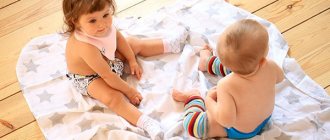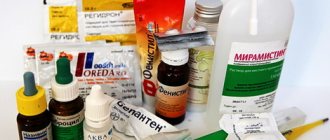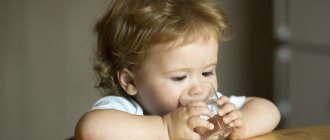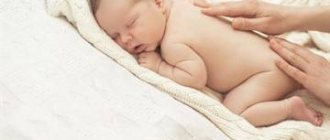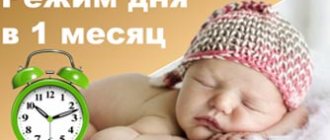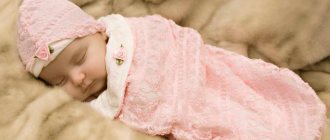Noticing that the baby is acting restless due to difficulty breathing, some mothers immediately pick up nasal drops. This situation is not always caused by a cold. The child’s sinuses may be clogged for another reason; the mother needs to solve the problem of how to get boogers out of a newborn’s nose using special means.
How to remove boogers
Causes of boogers in the nose
Many parents believe that if the baby’s nose is clogged, then the culprit is a runny nose. This is not entirely true. Mucus in small quantities should be present in the nasal sinuses so that the walls do not dry out (such an element of protection).
When you have a cold, a virus that gets into your nose causes snot to appear. They have nothing to do with ordinary goats. Although, when they dry out, they become similar to them.
Boogers have a completely different nature of formation; it is not always associated with a weakening of the baby’s immunity. The thing is that small hairs grow in a person’s nose, acting as a filter. The air that people breathe is not perfectly clean. To prevent micro-debris from entering the lungs when inhaling, vegetation in the nostrils is necessary in the form of bristles, which does not allow impurities to pass deeper.
What are boogers?
All the debris settles on the hairs, gradually clogging the nose. Children with developed motor skills are able to remove unpleasant congestion by picking their nostrils with their fingers. Newborns do not yet know how to do this.
The respiratory channels in the nose are too narrow in young children and therefore become clogged quickly. Various factors can lead to such trouble. They are identified by the boogers themselves, or rather by their shade:
- if the accumulations are dry and white, low indoor humidity is to blame;
- black - indicate that the baby inhaled dust, cigarette smoke, perfume mist, etc.;
- dried snot turns into yellow snot;
- green color indicates the presence of an infection in the respiratory tract.
Sometimes brownish veins can be seen in roe deer. These are traces of blood - blood vessels burst when sneezing (or for some other reason).
Why clean your spout?
Breathing disorders negatively affect the activity and calmness of the baby. A nose clogged with bugs prevents the child from eating and sleeping normally.
Why does a child under one year old have abundant clear snot?
When babies have difficulty breathing, they begin to intensively suck in air through their nostrils. This sometimes leads to complications - boogers can flow into the deep frontal maxillary sinuses or clog the lower respiratory tract.
Lack of hygiene of the nasal ducts in children can lead to increased intracranial pressure and seriously affect the decrease in the protective functions of the body.
Note! Infants with a constantly clogged nose experience a decrease in body weight, which leads to a lag in physical and mental development.
To avoid serious health problems, a mother should know how to clean boogers from her newborn baby’s nose. Even if the baby sneezes vigorously, he will not be able to independently reject the debris accumulated in his nose. Parents should clean it and carry out hygiene procedures regularly.
Cotton buds
Is it possible to clean a newborn's airways with cotton swabs? This method is not recommended for clearing the nasal passages of children. Doctors explain why cleansing can be dangerous.
The nose of newborn babies is tiny. If a child's airway is smaller in diameter than a cotton ball wrapped around a stick, it can get stuck. The risk especially increases if the stick is inserted deep.
In the absence of certain experience, such cleaning gives unpleasant sensations to the baby.
If you use cotton swabs to clean a newborn's nose, the crusts can be pushed even deeper, causing the child to have difficulty breathing.
For cleaning, you should only use products made of bendable plastic with a small amount of cotton wool at the end. It’s even better if a special sticky layer is applied to the cotton wool, simplifying the cleaning process.
How to remove boogers from a newborn
How often to change a newborn's diaper
An infant does not immediately learn to breathe through his mouth. Therefore, when the nose becomes clogged, the baby begins to feel anxious. One of the points in caring for your baby is sinus hygiene.
When it comes to newborns, a special approach is required. Cotton swabs are excluded immediately - the awkward movement of an inexperienced mother injures the little one's nose. Moreover, you cannot use a pin for these purposes.
There are safe devices for infants that can solve the problem of how to carefully remove boogers from a newborn.
Nasal Cleaning Devices
| Name | Description |
| Nasal aspirator* | The most recommended option, designed for children under 2 years of age. It is an improved model of a syringe, consisting of a storage tank and 2 tubes. The hygienic, quick cleaning procedure does not cause discomfort to the baby. |
| Pear | It is worth buying a device that is designed for use for newborns - it has a soft rubber tip that does not injure tissue. If you have a small enema at home, you can use it. |
| Flagella | You can’t call it a device – they simply make convenient tourniquets out of cotton pads for cleaning a newborn’s nose. |
*Battery-powered and vacuum-powered electronic aspirators can be found on sale. Their operating principle is similar to that of a vacuum cleaner.
Nasal aspirator
As an aid to help resolve the issue of how to clear dry bugs from a baby’s nose, the pharmacy may recommend special medications. They should not be used frequently so as not to disrupt the functioning of the mucous membranes and provoke allergies.
The same can be said about washing. In isolated cases it will provide effective assistance. Frequent use of solutions will cause irritation of the mucous membrane, swelling and lead to the development of chronic rhinitis.
Pear
Cleaning a baby's nose with a blower is quite easy. Before processing, the rubber tip should be washed in warm water using baby soap.
To extract snot, air is pushed out of the bulb and the end is inserted into the baby's nostril. Then you need to release the ball; as it fills with air, it will draw in excess mucus, clearing the passage. The nostrils are cleared one by one.
Despite the fact that the method is safe, it is impossible to achieve good results with it; a newborn’s nose will have to be cleaned several times in a row.
How to clean a newborn's nose
Lymph nodes in the intestines of a child - causes of inflammation
You should not constantly pick a newborn's nose - this is dangerous for the mucous membranes. But you cannot allow the ducts to become completely clogged. Therefore, a visual inspection of the sinuses is carried out daily. Having noticed problems with breathing and finding unwanted accumulations in the nose, the mother immediately decides how to remove the roes from the newborn.
General points
Regardless of how the boogers are pulled out of the baby’s nose, they do it in compliance with the following recommendations:
- before removing dried suspensions, they must be softened with a washing solution or vegetable oil (olive, flax, sea buckthorn, sunflower) must be used;
- To soften boogers, you can use breast milk: instill it in each nostril or moisten a cotton swab, which is inserted into the nose for a few seconds;
Cotton flagellum
- Boiled potatoes will make the process easier: before cleaning the baby’s nose from boogers, warm mashed potatoes, “packed” in a bandage, are applied on top and held until the potato mixture cools down;
- the child may resist the unpleasant manipulation, so when removing the boogers, the little one’s head should be fixed with your hand.
Note! If the baby is restless, crying or sick, it is better to postpone the procedure. You can remove the piglets a little later, when the baby is in the mood.
How to use the devices
Before removing boogers from a baby, the mother should study the problem in theory. The health of the baby depends on how correct the further process is. Each of the devices described above requires its own approach.
Nasal aspirator
To remove the piglets from the ducts, one tube of the device is inserted into the baby’s nostril, and the adult takes the second one into the mouth and performs suction manipulations. The accumulations from the baby's nose migrate to the aspirator reservoir. The same actions are performed with the second nostril. Then the device is washed.
To make the procedure easier and more enjoyable for mom, it is recommended to use more advanced models instead of a mechanical aspirator:
- the vacuum device looks similar to a traditional aspirator, but works on the principle of a vacuum cleaner; the degree of suction of boogers can be adjusted;
- The electronic version is shaped more like a rubber bulb and is controlled by pressing a button.
All material removed from the sinuses after the procedure is immediately removed from the container, and it is disinfected according to the instructions supplied with the device.
Rubber bulb
Before removing the roe with a syringe, the air is released from it. This is achieved by squeezing the pear in your hand. Then the tip is inserted into the baby’s nose and the can is slowly released. After vacuum suction of the contents of one nostril, the pear is washed and switched to the second sinus.
Important! During the procedure, you should not make sudden movements so as not to damage the mucous membrane.
Flagella
This method is the safest option for getting a booger out of a baby’s nose. They make miniature turundas from cotton wool. You can use the disk by dividing it into several parts. Flagella corresponding to the size of the nostril passage are twisted.
A turunda moistened with water or oil is inserted into the nostril with a rotational movement and then slowly removed. You need to remove the baby dolls in this way until the baby’s nose is completely clean. At the same time, fresh turunda is used each time.
A cotton swab is convenient if you need to remove dry accumulations and crusts. If there is mucus, this method is useless.
Washing
If the mother does not know how to clean the newborn’s nose from dry boogers without causing him discomfort, it is recommended to rinse the nostril passages. To do this, use a regular pipette and a pharmaceutical saline solution of sodium chloride.
You can buy low concentration sea water designed specifically for newborns (“Aquamaris”, “Physiomer”, “Morenazal”, etc.). Place 2 drops of the composition into each hole, wait a few minutes and suction the goat with a bulb or aspirator.
How to wash a toddler's nose
The rinsing solution can be prepared at home. To do this, dissolve 1 tsp in one liter of warm water. table salt. The product is not only effective in removing boogers, but also has good disinfectant properties.
If you do not abuse this procedure, then cleaning your nose from dry crusts will give the following results:
- the roes in the nasal passages will soften and become more accessible;
- viscous, thick mucus, if any, will liquefy and be easily removed even from distant sinuses;
- the protective function of the nasal mucosa is normalized;
- The self-cleaning function is restored.
As a result, the child's breathing becomes free. The baby sleeps well, eats and is active during waking hours.
Aids
You can soften boogers in other ways alternative to washing:
- Vegetable oils (but not essential oils) moisturize crusts in the nose well; You need to lubricate your sinuses with this product carefully, using a small amount; otherwise, the hairs will lose their mobility and cease to perform the filtering function;
- ointments also have an enveloping property; if you use them, it is recommended to take those that have antimicrobial and anti-inflammatory effects;
- drops can be either medicinal (to combat rhinitis) or special - for cleaning and rinsing.
You should turn to auxiliary means if a lot of dry deposits have accumulated in the baby’s nose. They are not recommended for daily use.
You don’t have to remove the softened goats, but give them the opportunity to come out on their own. To do this, just tickle the baby's nose a little and provoke him to sneeze.
Flagella from cotton pads
An effective way to cleanse noses of boogers is to use homemade cotton wool. They can be used from the first days of a baby's life. You can buy flagella at the pharmacy. However, it is much easier to clean the spout with products made at home than with store-bought counterparts. This is due to the fact that cotton wool flagella spread, while products made from discs retain their structure.
It will take three to four minutes to make. First you need to tear the cotton pad into two parts. One should be left for later use, and the second should be divided into two more halves, and then into two more parts. From one whole half of the disk you should get four blanks for flagella.
Then you need to start making them by folding. To make cotton wool more pliable, you can moisten it with warm boiled water or breast milk. It is necessary not only to place the flagellum in the baby’s nose, but also to rotate it in the cavity of the respiratory organ so that the boogers “wrap” around it.
Prevention Tips
It is impossible to completely prevent the formation of goats (you cannot resist nature). It is quite possible to minimize the problem. By taking a number of preventative measures, the mother will not have to bother her baby with unpleasant procedures so often:
- It is necessary to regularly care for the cavity of the small nose, observing basic hygiene rules.
- To prevent the baby's mucous membranes from drying out, it is recommended to use air humidifiers indoors. If this is not possible, then you can get rid of the dryness in the room by hanging wet terry towels on working heating radiators. As an option, install containers of cold water in the room.
Air humidification in the nursery
- When a child develops white boogers, it is possible that the baby’s hydrobalance is disrupted due to low air humidity. Therefore, it is recommended to periodically give the baby water with honey (if there is no allergy to the bee product).
- Constantly ventilating the room not only increases humidity, but also prevents the development of fungal mold, the spores of which can get into the baby’s nose.
Note! Before opening the windows in the apartment, you need to make sure that smog, smoke from burning leaves, or car exhaust gases do not penetrate into the room from the street.
- If you carry out wet cleaning in the house every day, this will significantly reduce the amount of dust inhaled by your baby.
- Smoking is not allowed in the room where the baby is. You should not use aerosol perfumes, the “dust” of which settles in the child’s nose.
- A newborn should be protected from drafts and hypothermia, which can cause a runny nose.
- When going for a walk with your baby, it is recommended to lubricate the nose with nasal ointment. This will prevent infection from entering the respiratory tract.
Something to remember! Breasts cannot cope with the described problem on their own. All responsibility for the baby’s health and the microclimate in the house falls entirely on the adult family members. If a mother does not know how to remove a newborn’s piglet, she can turn to a pediatrician for help.
The doctor will give recommendations on choosing the appropriate method, tell you what solutions and how often to rinse the sinuses. In cases where hygiene is powerless against nasal congestion, the district police officer will refer you for a consultation with an ENT doctor in order to promptly identify (or exclude) a pathology in the child.
